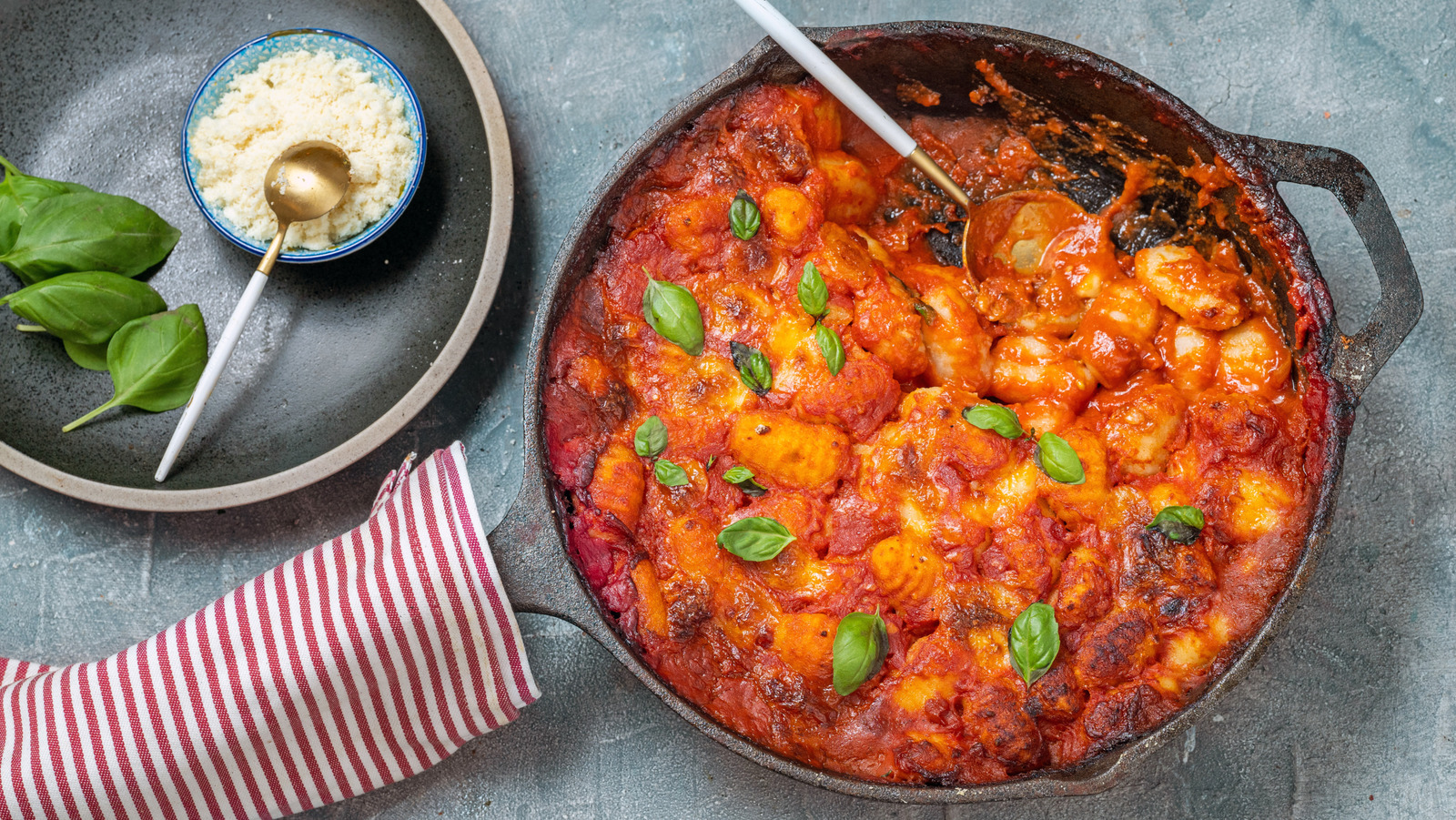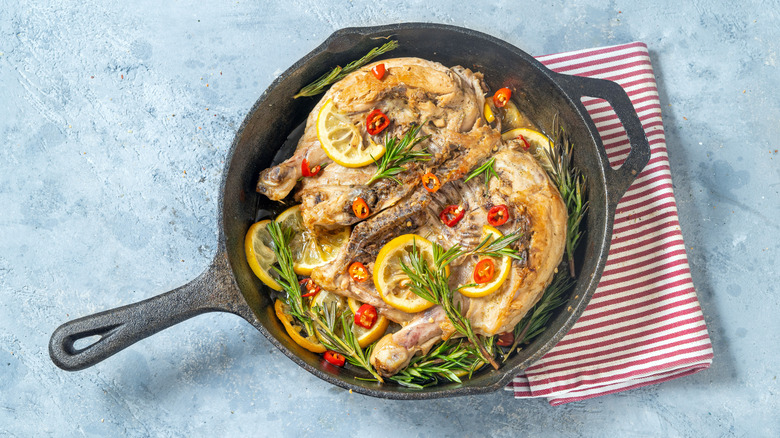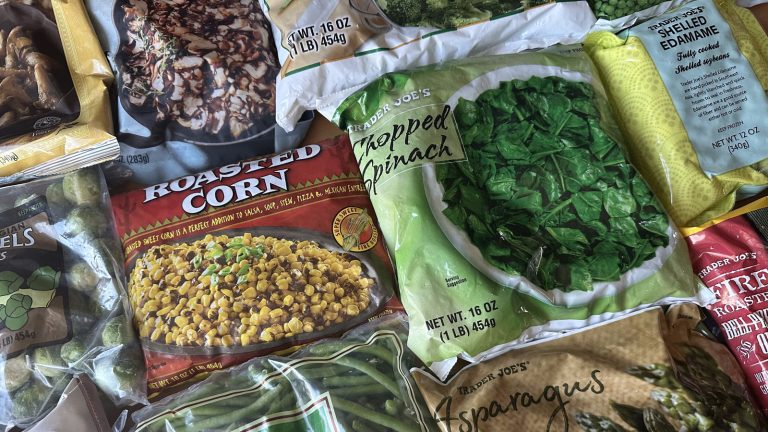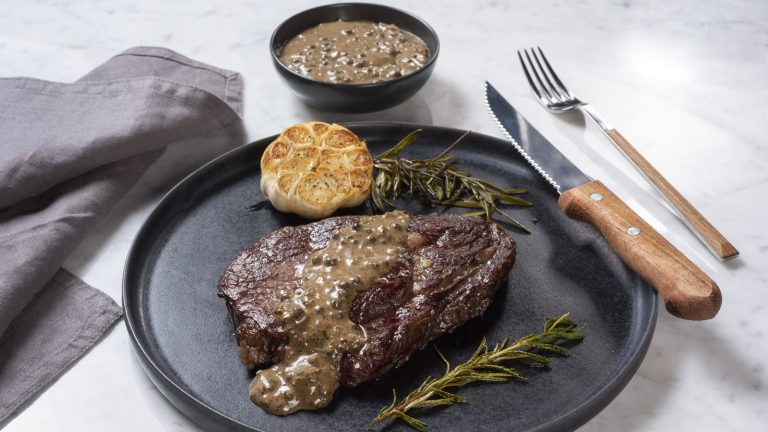When it comes to cookware, nothing beats a good cast iron pan. Once seasoned — meaning the surface is baked with a layer of oil to create a natural nonstick coating through a process called polymerization — it can last a lifetime. Once you get that right, it becomes the secret behind the crispiest fried chicken you’ve ever tasted (if you follow the 13 tips you need for the perfect fried chicken, of course). Thanks to its incredible heat retention and versatility, a cast iron pan should often be the first thing you reach for when it’s time to whip up a delicious meal.
But, while it’s great for almost any recipe, cooking acidic foods in it can be a bit of a challenge. That’s not to say acidic foods are completely off-limits, but ingredients such as tomato sauce, vinegar, or citrus juices (which naturally boast a low pH value) can easily cause the pan’s seasoning to break down. That’s why knowing how to season a cast iron pan, new or old, can be a deciding factor in whether you can cook your favorite marinara sauce in it. What’s more, the acid can cause the cast iron to leach into your food, making it taste a little metallic. Even though that’s not a bad thing since cooking on cast iron releases non-heme iron into your food — the same kind you typically find in nuts, legumes, whole grains, and leafy greens – it’s not a taste that everyone’s into.
How to know if your cast iron cookware can handle acidic foods
In case you were wondering, yes, there is a best temperature for seasoning your cast iron. Hence, if your pan has spent an hour in the oven at 450 to 500 degrees Fahrenheit, it should be able to handle about half an hour of cooking acidic foods. After 30 minutes, it begins to lose some of its protective layer or the dish starts to pick up a metallic taste.
That’s why picking the right recipe can make all the difference, not just for your meal, but for your cast iron pan. For instance, quick tomato sauce dishes or a drizzle of lemon juice over pan-seared salmon doesn’t leave acidic ingredients in the pan long enough to wear down the seasoning. Additionally, choosing the right cast iron skillet is key when cooking acidic foods. Cast-iron cookware with a solid layer of seasoning has a much better chance of handling acidic ingredients and extended cooking times compared to a skillet that’s just been unwrapped. Similarly, keeping an eye on the pH of your ingredients matters; for example, vinegar’s pH of around 2.5 is way more likely to cause damage. That’s why diluting it with a little water or stock can help keep your pan safe. Ultimately, if you do cook something acidic in your cast-iron cookware, don’t wait around to wash it. The faster you get those acidic remains off, the less chance the acid has to ruin your seasoning.





